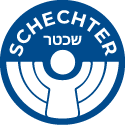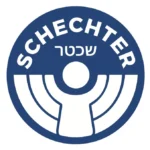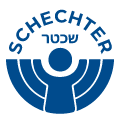Schechter’s Approach to Teaching Jewish Holidays and Traditions
At Schechter, Jewish holidays and traditions are not simply observed—they are lived, celebrated, and woven into the everyday rhythm of school life.
At Schechter, Jewish holidays and traditions are not simply observed—they are lived, celebrated, and woven into the everyday rhythm of school life. Our approach to teaching these sacred times ensures that students don’t just learn about rituals and customs; they internalize their meanings, connect them to their lives, and carry them forward with pride and understanding. The Jewish calendar is a rich tapestry of moments that mark agricultural cycles, historical events, and spiritual milestones. At Schechter, we honor this rhythm by celebrating each holiday in age-appropriate, community-centered, and deeply engaging ways. From Rosh Hashanah to Shavuot, every festival becomes an opportunity for joyful learning and meaningful reflection. Our holiday instruction begins with the “why.” Why do we light candles on Hanukkah? Why do we sit in a sukkah? Why is Passover called Zman Cheruteinu (the season of our freedom)? Students explore the historical origins, spiritual messages, and moral lessons of each holiday. This depth helps them move beyond surface-level celebration and into authentic connection. Each holiday is approached through multiple modalities. Students sing songs, create art, perform plays, and engage in storytelling. They bake challah for Shabbat, build model sukkot, craft Purim masks, and design Passover haggadot. These hands-on projects make traditions tangible and memorable, especially for our younger learners. Hebrew is incorporated throughout, giving students the tools to recite blessings, understand key vocabulary, and feel at home in the liturgy. This builds comfort and fluency, helping students develop confidence in participating in synagogue and family celebrations alike. Our curriculum is built around experiential learning. A lesson on Yom Kippur might include writing reflection letters and engaging in acts of forgiveness. On Tu B’Shevat, students might plant trees and learn about environmental stewardship. During Sukkot, classes gather in the sukkah to eat, sing, and share Torah. These moments help students embody the values and practices of each tradition. Schechter places strong emphasis on community celebration. Whole-school assemblies, holiday-themed spirit days, and student-led presentations build excitement and foster unity. Each grade often takes a leadership role in a holiday program, allowing students to contribute in ways that reflect their age and strengths. Parents are important partners in holiday education. Family programs like Seder workshops, candle-making events, and challah bakes bring the learning home and foster Jewish connection across generations. These opportunities strengthen the home-school relationship and ensure that the values we teach extend beyond the classroom. In middle school, students explore the philosophical and ethical dimensions of holidays. They might examine the role of joy in Judaism during Purim, discuss the balance between independence and divine guidance at Passover, or debate interpretations of the High Holiday liturgy. These discussions promote deeper thinking and allow students to develop their own Jewish perspectives. We also emphasize inclusivity and cultural awareness. Students learn about how Jews around the world celebrate holidays differently, highlighting Sephardic, Ashkenazic, Mizrahi, and other customs. This exposure fosters respect for diversity within the Jewish people and enhances their appreciation for shared heritage. Tefillah (prayer) is closely aligned with holiday themes. Students learn and recite special prayers such as Hallel, Al Hanisim, and Yizkor with understanding and intention. Teachers help students connect emotionally to these liturgical moments, whether through song, movement, or reflection. Each holiday becomes a mirror for self-growth. Yom Kippur invites introspection. Sukkot teaches gratitude. Hanukkah inspires courage. Passover calls us to pursue freedom. These themes are brought into classroom discussion and personal reflection, helping students see how ancient wisdom speaks to their modern lives. Schechter’s approach ensures that students don’t outgrow Jewish holidays—they grow with them. What begins as joyfully waving a lulav in kindergarten evolves into an appreciation of harvest cycles and Jewish unity in middle school. This progression honors their developmental stages while deepening their lifelong engagement with tradition. In a world that often values novelty over ritual, Schechter cultivates a different mindset—one that finds richness in repetition, meaning in memory, and relevance in tradition. Our students leave with the skills to participate in and lead Jewish rituals, and with hearts full of the joy that comes from shared celebration. By making Jewish holidays a central and vibrant part of school life, Schechter helps students see Judaism not as something they do, but as something they live—day by day, season by season, tradition by tradition.









